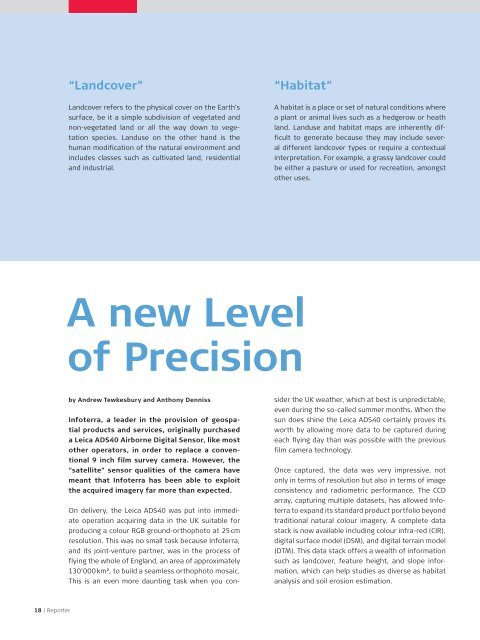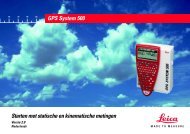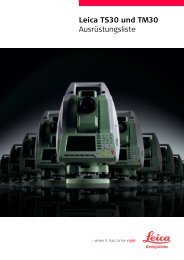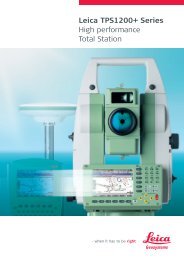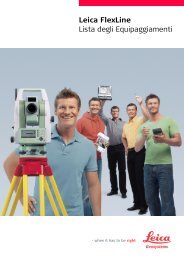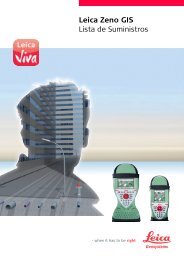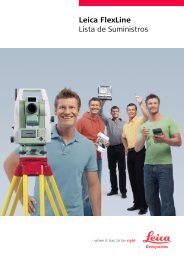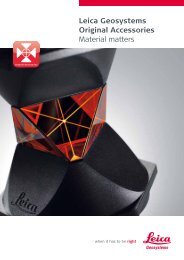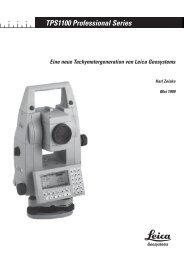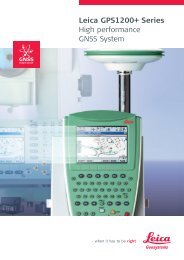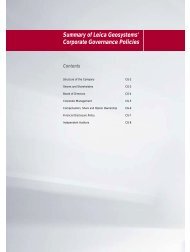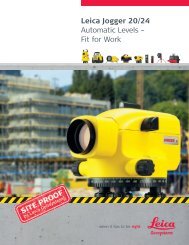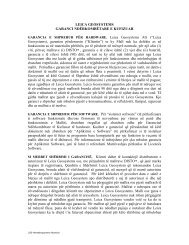The Global Magazine of Leica Geosystems
The Global Magazine of Leica Geosystems
The Global Magazine of Leica Geosystems
You also want an ePaper? Increase the reach of your titles
YUMPU automatically turns print PDFs into web optimized ePapers that Google loves.
18 | Reporter<br />
“Landcover”<br />
Landcover refers to the physical cover on the Earth’s<br />
surface, be it a simple subdivision <strong>of</strong> vegetated and<br />
non-vegetated land or all the way down to vegetation<br />
species. Landuse on the other hand is the<br />
human modification <strong>of</strong> the natural environment and<br />
includes classes such as cultivated land, residential<br />
and industrial.<br />
A new Level<br />
<strong>of</strong> Precision<br />
by Andrew Tewkesbury and Anthony Denniss<br />
Infoterra, a leader in the provision <strong>of</strong> geospatial<br />
products and services, originally purchased<br />
a <strong>Leica</strong> ADS40 Airborne Digital Sensor, like most<br />
other operators, in order to replace a conventional<br />
9 inch film survey camera. However, the<br />
“satellite” sensor qualities <strong>of</strong> the camera have<br />
meant that Infoterra has been able to exploit<br />
the acquired imagery far more than expected.<br />
On delivery, the <strong>Leica</strong> ADS40 was put into immediate<br />
operation acquiring data in the UK suitable for<br />
producing a colour RGB ground-orthophoto at 25 cm<br />
resolution. This was no small task because Infoterra,<br />
and its joint-venture partner, was in the process <strong>of</strong><br />
flying the whole <strong>of</strong> England, an area <strong>of</strong> approximately<br />
130’000 km², to build a seamless orthophoto mosaic.<br />
This is an even more daunting task when you con-<br />
“Habitat”<br />
A habitat is a place or set <strong>of</strong> natural conditions where<br />
a plant or animal lives such as a hedgerow or heath<br />
land. Landuse and habitat maps are inherently difficult<br />
to generate because they may include several<br />
different landcover types or require a contextual<br />
interpretation. For example, a grassy landcover could<br />
be either a pasture or used for recreation, amongst<br />
other uses.<br />
sider the UK weather, which at best is unpredictable,<br />
even during the so-called summer months. When the<br />
sun does shine the <strong>Leica</strong> ADS40 certainly proves its<br />
worth by allowing more data to be captured during<br />
each flying day than was possible with the previous<br />
film camera technology.<br />
Once captured, the data was very impressive, not<br />
only in terms <strong>of</strong> resolution but also in terms <strong>of</strong> image<br />
consistency and radiometric performance. <strong>The</strong> CCD<br />
array, capturing multiple datasets, has allowed Infoterra<br />
to expand its standard product portfolio beyond<br />
traditional natural colour imagery. A complete data<br />
stack is now available including colour infra-red (CIR),<br />
digital surface model (DSM), and digital terrain model<br />
(DTM). This data stack <strong>of</strong>fers a wealth <strong>of</strong> information<br />
such as landcover, feature height, and slope information,<br />
which can help studies as diverse as habitat<br />
analysis and soil erosion estimation.


